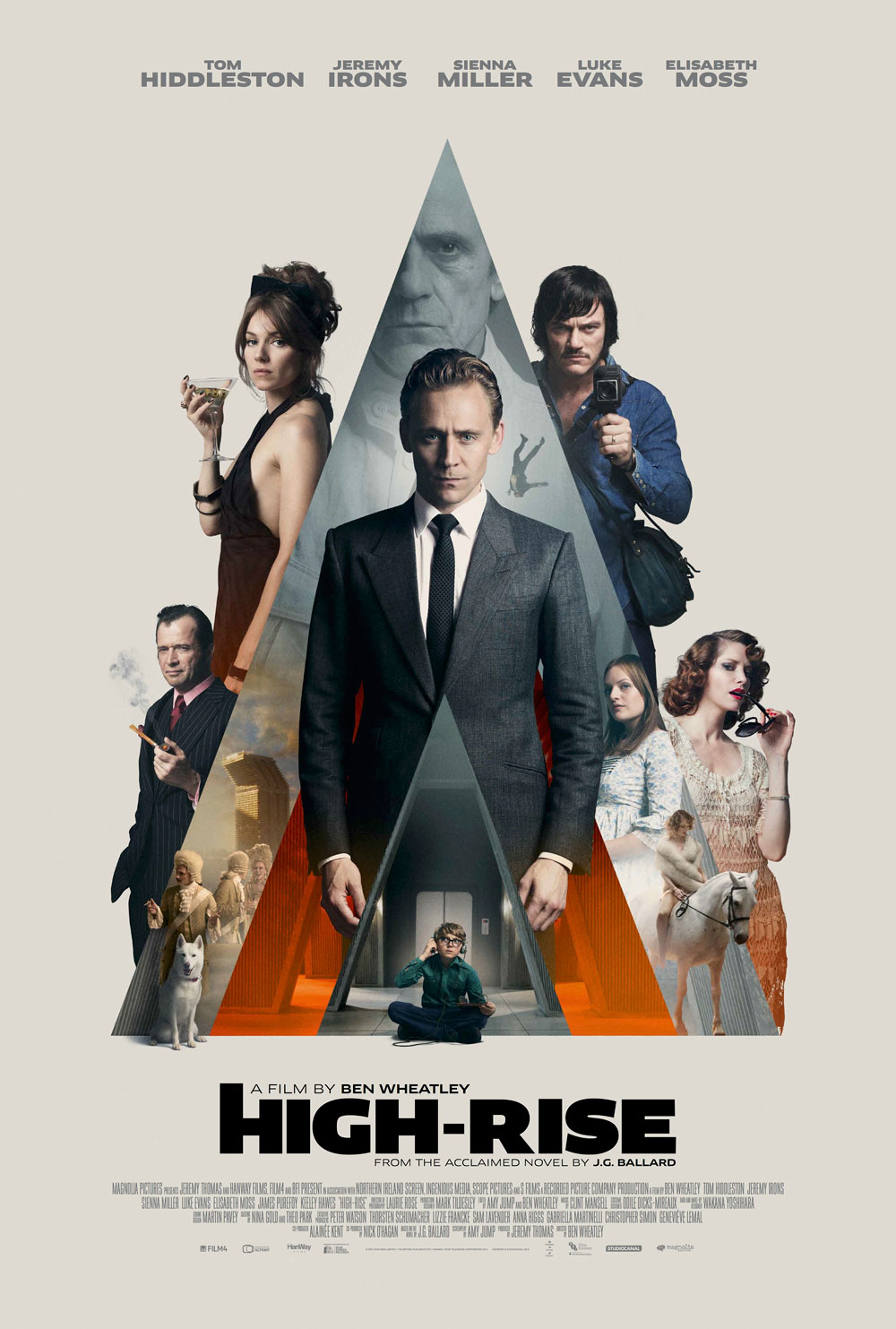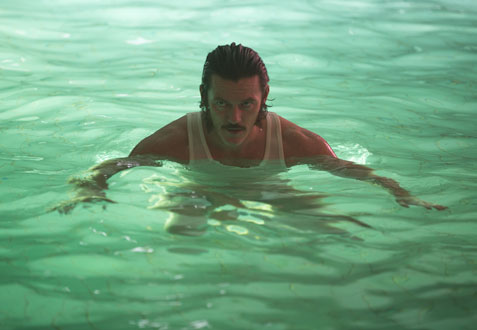
Producer Jeremy Thomas has been trying to bring J.G. Ballard’s acclaimed novel, “High-Rise,” to the big screen for almost 40 years, despite many claiming that the book was unfilmable. He probably should have heeded those warnings, because while Thomas finally got his wish with the help of director Ben Wheatley, the resulting product is a stylish but empty adaptation that doesn’t resonate as much today as it would have in the late 1970s, the dystopian setting of Ballard’s Thatcher-era satire. In many respects, it feels like a movie lost in time. Though Wheatley has shown great potential with some of his earlier films, “High-Rise” is yet another disappointment following the tedious, psychedelic head trip of “A Field in England” that hooks you with its intriguing premise but slowly loses its grasp as the story spirals out of control.
Tom Hiddleston stars as Dr. Robert Laing, the newest resident of a luxury apartment building that has all the conveniences and commodities of modern life without ever having to go outside. But while the high-rise seems like paradise on the surface, Laing notices a simmering tension between the upper-class tenants who live on the top floors and the middle-class tenants confined to the lower levels. The building’s reclusive architect, Anthony Royal (Jeremy Irons), chalks it up to “teething problems,” but when an increasing series of power outages and structural flaws begin to affect the standard of living – particularly among the poorer residents – that tension boils over, leading to a literal class war that devolves into a barbaric wasteland of debauchery and destruction. Oh, and the odd barbecued dog’s leg as well.
The “Snowpiercer” and “Lord of the Flies” comparisons are inevitable, but although “High-Rise” aspires for the same kind of socio-political allegory, there’s no real narrative to latch onto. Amy Jump’s script is aimless, repetitive and about as subtle as a sledgehammer (cue the Margaret Thatcher soundbite), and it doesn’t do a very good job of explaining the struggles of the middle-class characters either. They never appear as bad off as we’re led to believe, so when the movie suddenly descends into chaos midway through, it’s hard not to wonder if some vital information has been withheld. The rate at which the conflict escalates is as implausible as the idea that society would crumble that easily; though Ballard’s commentary on class and consumerism isn’t lost on me, the manner in which it’s presented – including a free-for-all in the supermarket where Laing fights another man over a bucket of paint – is so ridiculously exaggerated that it ceases to be funny.
Though the first hour is a bit slow, at least it seems to be building towards something. The second half, on the other hand, finds Wheatley succumbing to his own primal urges as he sets fire to the movie, burning down any semblance of character or plot. Unfortunately, that also affects the performances, which are at the mercy of the underdeveloped script. Hiddleston does an admirable job as the self-contained physiologist, even if that coldness works against his natural charisma, but the female characters (including a bohemian single mother played by Sienna Miller and a neglected housewife played by Elisabeth Moss) barely register as anything more than sexual objects. Luke Evans’ documentary filmmaker, the agitator at the heart of the conflict who Laing describes as “the sanest person in the building,” is the only one who’s even remotely three-dimensional, and it’s some of the finest work that he’s done.
Wheatley injects some nice bits of dark humor along the way, but the film’s few positives – the cinematography, Clint Mansell’s score (including a haunting cover of the ABBA hit “S.O.S.” by Portishead) and the production design – are easily outweighed by its flaws. It’s too bad that Stanley Kubrick isn’t still around, because he would have knocked “High-Rise” out of the park. Wheatley’s version, meanwhile, isn’t unlike the titular building itself: it looks great on the surface, but the deeper you dig, the more problems you uncover. That could very well be the point that he was trying to make, but surely there was a more engaging way to go about it.
Related Posts
Posted in: Entertainment, Movie Reviews, Movies
Tags: Elisabeth Moss, Luke Evans, Sienna Miller, Tom Hiddleston
















